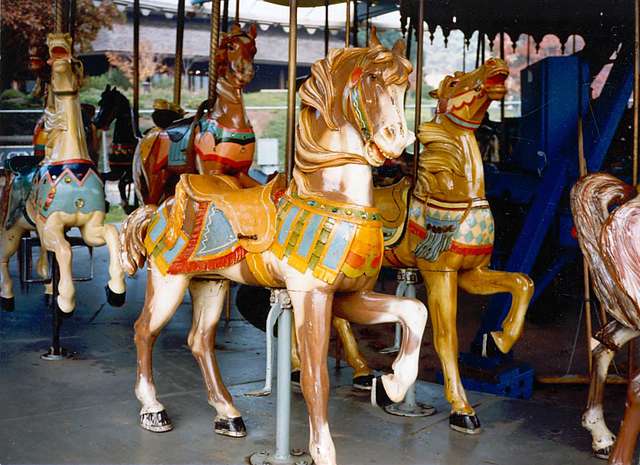How does a Carousel work?

Hop aboard the magical world of carousels as we uncover the secrets of how these fairground rides work!
At the heart of every carousel is a stationary centre pole, typically made out of metal or wood. This pole forms the foundation for the motion of the carousel. Nowadays, this is usually powered by an electric motor, but traditional Victorian carousels used a steam motor.
The motor drives a small pulley to turn the carousel and move the horses. A clutch ensures a seamless start to the proceedings. The small pulley turns a drive belt on a larger pulley. This pulley, like a master puppeteer, oversees a small-diameter, horizontal shaft, with a series of pinion gears moving a vertical shaft. This moves another series of pinion gears that are attached to the final drive gear.
This hear is attached to the 'sweeps' of the carousel, which extend from the centre pole and support the horses, platforms and riders, and moves them up and down in the classic way.
The weight of the carousel is supported by a bearing at the top of the centre pole. The sweeps are supported by this bearing as well as a series of poles that connect down to the base of the Merry-go-Round, and a centre-bearing keeps everything stable.
Of course, the magic of this children's funfair ride isn't just in its mechanics! The intricate artistry of the carved wooden horses and their hand-painted designs adds to the ambience and makes this a favourite among the generations.
So, next time you take a whirl on a carousel, take a moment to marvel at the artistry and engineering that brings these steeds to life! ~If you need more information about Merry-go-Rounds, check out our Carousel FAQs, or contact us to speak with our team.
